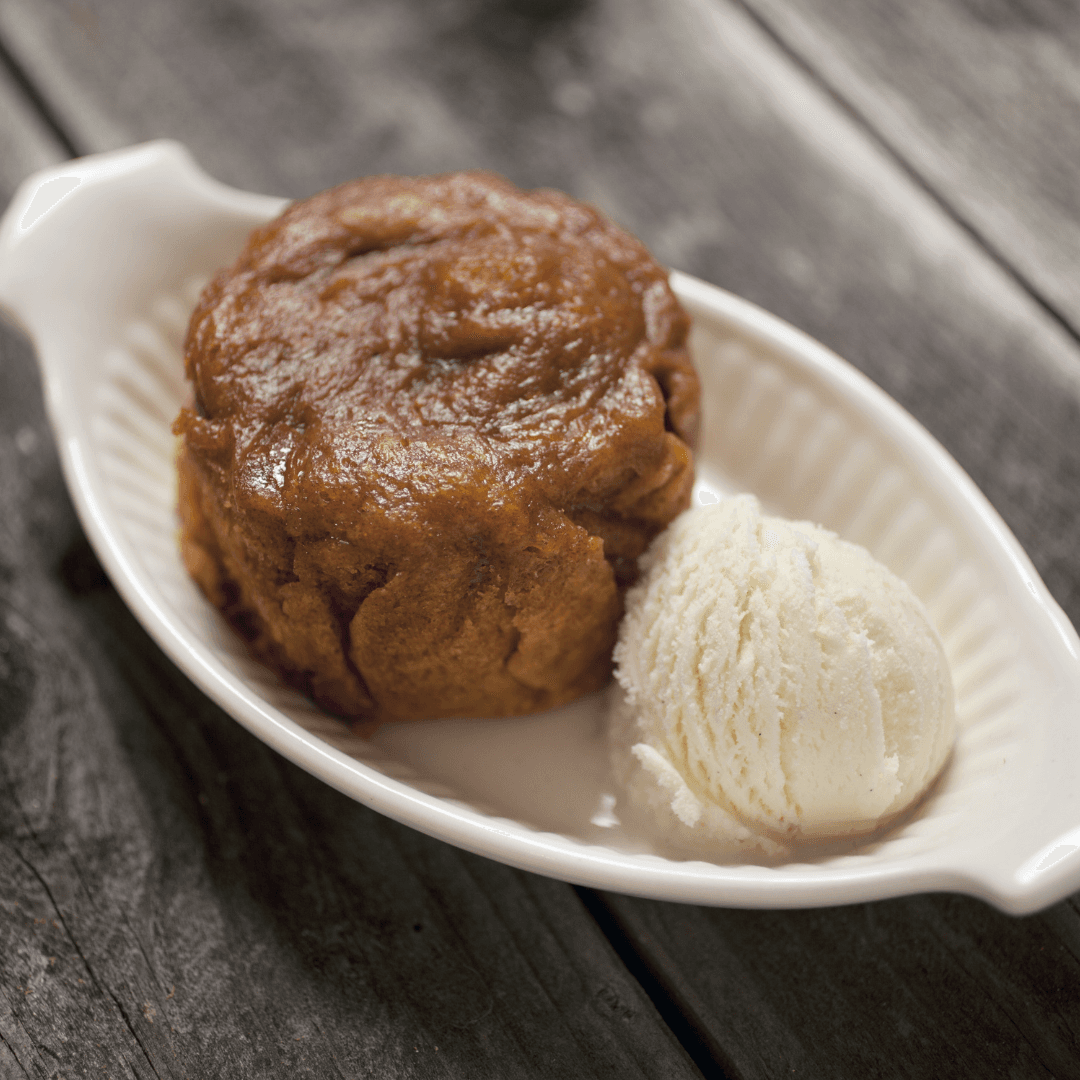Rustic Persimmon Pudding
Overview:
INGREDIENTS:
Preparation:
Preheat your oven to 325°F (163°C). Grease 8 ramekin cups (each with a capacity of about ¾ cup) and place them on a baking tray.
In a large bowl, whisk together the flour, baking powder, baking soda, salt, cinnamon, nutmeg, and cloves.
In another bowl, beat together the persimmon pulp, sugar, eggs, milk, melted butter, and vanilla extract until well combined.
Gradually add the dry ingredients to the wet mixture, stirring until just combined.
Evenly distribute the batter among the prepared ramekin cups, filling each about three-quarters full.
Place the baking tray with the ramekins in the oven and bake for 25-30 minutes, or until the puddings are set and a toothpick inserted into the center of each comes out clean.

Allow the puddings to cool slightly in the ramekins. They can be served warm directly in the ramekins or gently removed and plated.

Buy Recipe Ingredients
Set out on a baking exploration with our rustic persimmon pudding, crafted to capture the essence of this unique fruit. With Foraged, you have access to premium ingredients that transform ordinary pudding into an extraordinary dessert. These ingredients are key to enhancing the natural sweetness and subtle spice of the persimmons in your pudding. Get ready to bake pudding that is not only delicious but also a celebration of seasonal flavors. Simply pick your ingredients, like permission fruit, from the list below and get ready to impress with this delightful persimmon pudding.
What Are Persimmons?
Persimmons are an exotic fruit prized for their vibrant color and sweet, honey-like flavor. They are native to East Asia and are widely used in a variety of culinary dishes. Persimmons come in two main types: astringent and non-astringent, both of which offer distinct textures and tastes. They are a versatile ingredient, used in everything from fresh salads to baked goods like persimmon pudding.
What Do Persimmons Taste Like?
The taste of persimmons is uniquely sweet and reminiscent of honey, with subtle hints of apricot and spice. When fully ripe, astringent persimmons are soft and jelly-like, providing a rich, sweet flavor that's unparalleled. Non-astringent persimmons, on the other hand, are firmer and can be enjoyed while still slightly crisp. In dishes like persimmon pudding, their natural sweetness and moist texture enhance the overall flavor profile, making them a delightful ingredient in desserts.